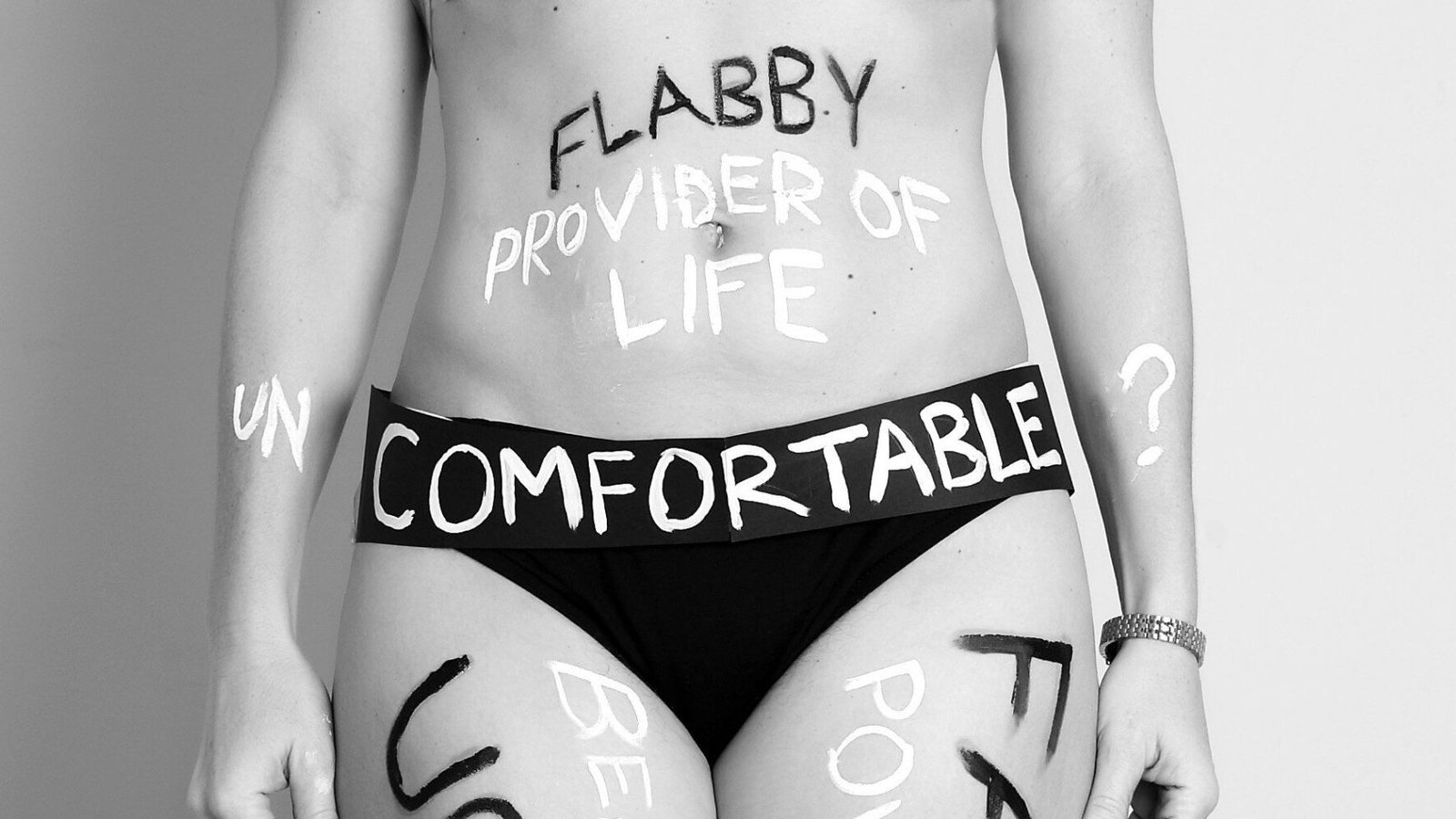
Table of Contents
What is Body Writing
Body writing, a fascinating and multifaceted kink activity, allows individuals to explore creativity and sensuality on an entirely new canvas—the human body. As a form of expression, it can range from the playful to the deeply intimate, offering something for both novices and experienced kinksters alike. At its core, body writing involves using the skin as a surface to inscribe text or symbols, making it one of the simplest yet most versatile activities to incorporate into one’s kink repertoire.
The appeal of body writing lies in its simplicity and accessibility. With a basic writing tool like a marker, lipstick, or paint, and a dash of creativity, anyone can begin to explore this enticing practice. The options are limited only by one’s imagination and comfort level, making it an ideal starting point for those new to kink. For beginners, body writing provides a gentle introduction to consensual touch and boundary setting, as participants can easily communicate what feels good and what doesn’t.
However, the simplicity of body writing should not overshadow its potential to be deeply meaningful and complex. Advanced practitioners often integrate body writing with other kinks such as bondage, role-playing, or sensation play, thereby creating a rich, multifaceted experience. For instance, one might write a series of commands on their partner’s body, enhancing a power dynamic within a role-play scenario, or incorporate tactile sensations by using different textured writing tools.
Moreover, body writing can be a powerful medium for emotional and psychological connection. It offers an intimate interaction that requires trust and communication. The act of writing on a partner’s skin can be both tender and stimulating, fostering a deeper bond between participants. In communal settings, body writing can also serve as a form of artistic expression, where participants craft and share visual narratives with the broader kink community.
In essence, body writing is a versatile activity that has something to offer everyone, regardless of their level of experience. Whether approached with lighthearted fun or profound intimacy, the act of inscribing words and symbols onto the skin opens a world of possibilities for connection, creativity, and kink exploration.
The Humiliation Aspect of Body Writing
Body writing encompasses a wide range of applications within the BDSM community, often serving as an intense form of emotional expression through physical means. One of the more prominent facets is that of humiliation and objectification. At its core, this practice can involve the use of degrading and dehumanizing language written directly onto the individual’s body. It is a method frequently employed to enhance feelings of submission and vulnerability, thus facilitating a dynamic power exchange between the dominant and submissive parties.
Typically, the dominant partner inscribes text onto the submissive’s skin, conveying messages of derision, insults, or proclamations of ownership. Common examples include phrases such as “filthy disobedient slut” or “mistress’s fucktoy.” These written declarations serve to solidify the submissive’s role and reinforce the hierarchical disparity. This writing process is more than mere play; it establishes an overt manifestation of control and domination, binding the submissive both physically and psychologically.
The practice of body writing as a means of humiliation extends beyond the written word itself. The very act of being marked can evoke strong emotional reactions. For many, having slanderous or ownership-based terms etched onto their skin acts as a tangible reminder of their submissive position and further cultivates a sense of inferiority. This is especially significant within the power dynamics of BDSM relationships, where such acts of written dominion can profoundly influence the overall experience and emotional depth of the interaction.
It is crucial for those exploring this aspect of body writing to maintain clear communication and established boundaries beforehand. Consent and mutual understanding are paramount to ensuring all parties feel safe and respected throughout the process. Through careful consideration and an appreciation for the emotional implications, body writing can offer a powerful and deeply immersive experience in the context of humiliation and objectification.
Positive Reinforcement in Body Writing
Body writing, often associated with more intense and risqué forms of expression, doesn’t always need to involve elements of degradation or overt sensuality. In fact, it can serve as a powerful tool for positive reinforcement, enhancing self-perception and the dynamics within a relationship. This aspect of body writing involves inscribing compliments and affirmations on the skin, focusing on the promotion of confidence, self-love, and emotional intimacy.

Imagine the gentle touch of a marker or a pen meticulously crafting words like “beautiful,” “wonderful,” or “sexy” on the skin. These inscriptions can turn into anchors of positive emotion, creating a sense of comfort and acceptance for the receiver. This form of body writing can be particularly impactful for those who seek a milder, more affirming experience. It shuns the elements of degradation often linked with more intense forms of kink, and instead embraces upliftment and encouragement.
Couples or partners engaged in body writing as positive reinforcement often find that it deepens their emotional connection. It creates an intimate moment where one partner takes the time to recognize and celebrate the attributes they cherish in the other. This act of writing positive affirmations can significantly boost the recipient’s self-esteem, creating a reinforcing loop of affection and admiration. The tactile nature of the activity also adds a layer of physical connection, enhancing the overall bonding experience.
Moreover, positive reinforcement through body writing can serve therapeutic roles. Individuals struggling with issues like body image or self-esteem can find solace and empowerment in seeing affirming words written on their skin. This practice encourages a focus on the positive aspects of oneself, counteracting the often relentless self-criticism that many people endure.
In sum, body writing offers a versatile range of experiences, and when employed for positive reinforcement, it becomes a nurturing, affirming practice. By carefully choosing words that uplift and celebrate, one can transform this intimate activity into a loving ritual that promotes emotional well-being and strengthens interpersonal bonds.
Exhibitionism and Body Writing
Exhibitionism has long been a powerful element within the realm of kink and fetish practices. When combined with body writing, the potential for self-expression and connection between partners is significantly amplified. The act of adorning one’s skin with meaningful words, phrases, or symbols transforms the body into a canvas that tells a story, inviting the gaze of others while expressing deeply personal sentiments. This artistic presentation can be particularly compelling at play parties, where body writing becomes a central attraction, captivating the attention of onlookers and enhancing the communal atmosphere.
For those who indulge in these exhibitionistic experiences, having their body writing showcased in public or semi-public settings can be incredibly empowering. Play parties offer a safe space for individuals to explore and display their desires unabashedly. In this context, the written words serve as more than mere decoration; they function as declarations of identity, belonging, and the intricacies of the wearers’ sexual dynamics. The display can fortify the connection between partners, who take pride in their shared creation and in witnessing others’ reactions to their intimacy made visible.
Moreover, body writing isn’t confined to the physical gatherings; intimate photography also plays a significant role. Capturing the artistry of body writing through photography allows one to preserve these expressions and revisit the emotions they evoke. Photographic sessions provide an opportunity for both parties to engage in the process creatively, selecting poses and compositions that underscore the words and their significance. These images can become cherished keepsakes or shared within trusted communities, allowing for a broader, yet controlled, exhibition of their relationship and kinks.
In essence, the exhibitionistic appeal of body writing serves not just as a visual spectacle but as a potent mechanism for deepening the emotional and erotic bond between partners. Whether displayed in a lively setting or through intimately curated photography, body writing conveys a profound narrative, symbolizing the unique and intricate tapestry of connection between those who practice it.
Dehumanization and Objectification in Body Writing
Body writing extends beyond mere surface decoration to explore themes of dehumanization and objectification. Some individuals derive an exhilarating, albeit complex, pleasure from the reduction of their identity to mere words or symbols written on their skin. This form of playful degradation can heighten the sense of submission and provide a profound thrill for both the writer and the subject.
In practice, the act of body writing as a form of dehumanization involves marking the body with derogatory or ownership-oriented terminology. Words such as “slave,” “property,” or other terms that denote subjugation may be inscribed on the skin. This places the subject in a realm where they are seen as less than human, invoking a psychological shift that many find electrifying within the context of consensual kink dynamics. This transformation enables participants to explore power imbalances and the dynamics of control from a perspective that feels starkly visceral.
Conversely, the objectification aspect of body writing can involve the physical labeling of the body with terms that categorize parts of it for consumption or use by others. For instance, writing words that command specific actions or designate areas of the body for certain types of attention or touch can amplify the experience of being treated as an object or vessel. This gradual erosion of personal identity, replaced by imposed labels, ticks a distinct box of erotic thrill for both partners engaging in such a dynamic.
Hidden messages, often penned in discreet areas, can also serve as a private and titillating addition to body writing. These concealed inscriptions might carry personal, intimate, or even embarrassingly delightful meanings that only become known when revealed to a select partner. The anticipation and secrecy involved in such hidden communications enhance the overall excitement and sense of allure.
Ultimately, body writing that delves into dehumanization and objectification elicits a unique form of connection. For those immersed in kink and power play, it offers an avenue to deeply explore the boundaries of trust, consent, and the tantalizing thrill of subversion within a safe and consensual space.
Advanced Practices: Knife Play and Blood Play

For individuals exploring the more intense facets of body writing, the integration of knife play or blood play can provide a profoundly exhilarating experience. Knife play involves using knives or other sharp objects to create superficial cuts or marks on the skin, which can then serve as a canvas for intricate body writing designs. Similarly, blood play incorporates the use of one’s own or a partner’s blood to produce dramatic, visually striking patterns and messages. However, these advanced practices mandate stringent adherence to safety protocols and psychological readiness.
Prior to engaging in knife play or blood play, thorough knowledge and careful preparation are indispensable. Taking a first aid course is highly recommended to equip participants with the skills needed to handle potential injuries and emergencies. A purpose built first aide kit should always be close by. This foundational knowledge ensures that any complications can be addressed promptly and effectively, thereby minimizing risks and enhancing the overall safety of the practice.
Sterilization of tools is another critical aspect that must not be overlooked. All implements used should be meticulously cleaned and disinfected before each session to prevent infections. Utilizing surgical-grade instruments and disposable blades can further amplify safety levels. Additionally, participants should be educated on the proper techniques for creating superficial cuts that are deep enough to produce the desired visual effect without causing significant harm. Precision and control are paramount to ensure an experience that is both safe and enjoyable.
Equally important is the aspect of aftercare, which involves tending to the physical and emotional well-being of all participants once the session is complete. Wounds need to be promptly and properly cleaned, bandaged, and monitored for any signs of infection. Emotional aftercare is also essential, providing reassurance and support to ensure that everyone involved feels secure and respected. This holistic approach not only nurtures the body but also the spirit, promoting a positive and fulfilling exploration of these advanced practices.
In conclusion, while knife play and blood play can elevate body writing to a new level of intensity and artistry, they require a heightened level of respect, expertise, and care. Proper preparation, safety measures, and aftercare are non-negotiable elements that ensure these practices contribute to an enriching and safe kink experience.
Creative Tools and Implements for Body Writing
Body writing is a versatile and expressive practice that can be tailored to fit a wide array of preferences and experiences. One of the standout aspects of body writing is the diverse range of implements available for crafting unique and personal expressions. For those new to body writing, starting with common cosmetic items like eyeliners and lipsticks can be an excellent introduction. These tools are typically safe for the skin and allow for a variety of lines, colors, and textures.
As individuals become more comfortable with the practice, washable markers can provide an expanded palette for more ambitious designs. These markers can be found in a myriad of colors, enabling detailed and vibrant creations. Liquid latex, another innovative option, can be used to create three-dimensional designs and textures that add a sensory component to the artwork.
For those who wish to explore a more intense experience, sharp implements like knives and scalpels can be incorporated with caution and consent. These tools can be used to etch intricate designs into the skin, but safety and hygiene are paramount to prevent injury and infection.
In addition to these traditional and intense tools, there are many unique implements that can add flair to body writing. Branding tools, for example, can create lasting impressions that resonate with the permanence akin to tattoos. Carved paddles can also be employed, leaving imprints of letters or designs on the skin through impact.
Ultimately, the tools and implements for body writing are limited only by imagination and the boundaries of safety and consent. Experimentation with different materials and techniques can provide a rich tapestry of experiences, allowing both the writer and the canvas to express themselves in profoundly personal ways.
Aftercare and Emotional Support Post-Scene
After engaging in a body writing scene, it is paramount to emphasize the necessity of aftercare to ensure the well-being of all participants. This step is particularly crucial when the scenario incorporates elements such as degradation, humiliation, or skin-breaking, as these activities can have a profound emotional and physical impact.
Aftercare can take on many forms, but at its core, it is about providing comfort and reassurance. Pampering your partner can be an effective method—this could include gentle massages, wrapping up in a soft blanket, or offering a comforting beverage. Verbal reassurances are equally important; affirming their worth and expressing appreciation for their participation can help alleviate any lingering feelings of vulnerability or self-doubt.
Engaging in a shared activity, such as cleaning off the writing together, can also serve as a form of bonding and closure. This practice can help transition from the intensity of the scene to a calmer, more relaxed state. If the body writing involved skin-breaking, proper wound care is essential to prevent infection and promote healing. Ensure that any cuts or abrasions are thoroughly cleaned and treated with appropriate antibacterial products.
Another significant aspect of aftercare is addressing the physical needs that arise post-scene. Providing snacks can help stabilize blood sugar levels, which may have fluctuated due to the intense emotional and physical exertion experienced during the scene. Opt for nutritious options such as fruits, nuts, or granola bars to offer immediate energy and support recovery.
In conclusion, aftercare is not just a recommended practice but an integral part of any body writing experience. By focusing on emotional support and physical nurturing, you ensure a safe and positive environment that enriches the bond between participants and fosters mutual respect and care.
Resource Article : MissBonnie 2024







